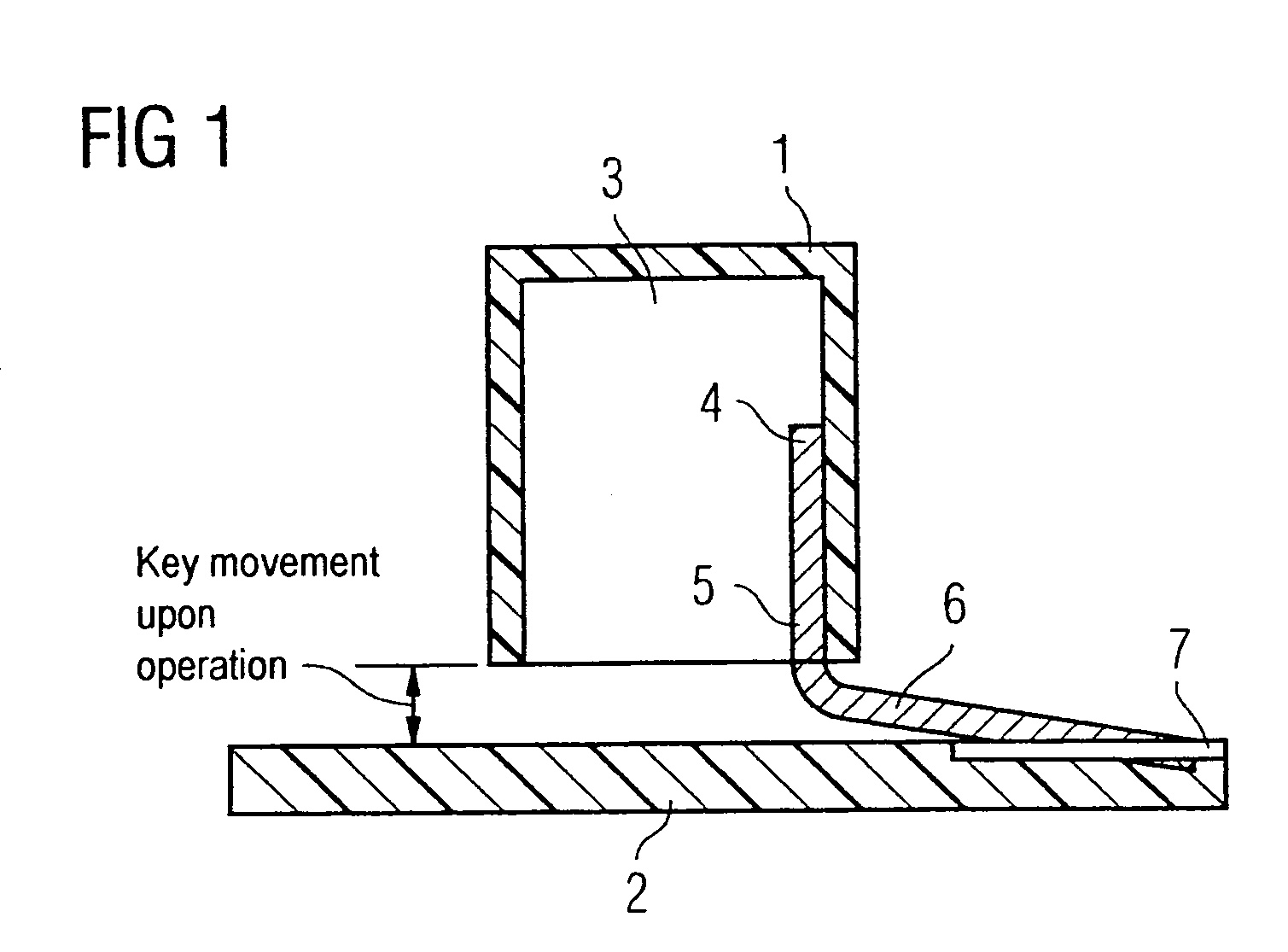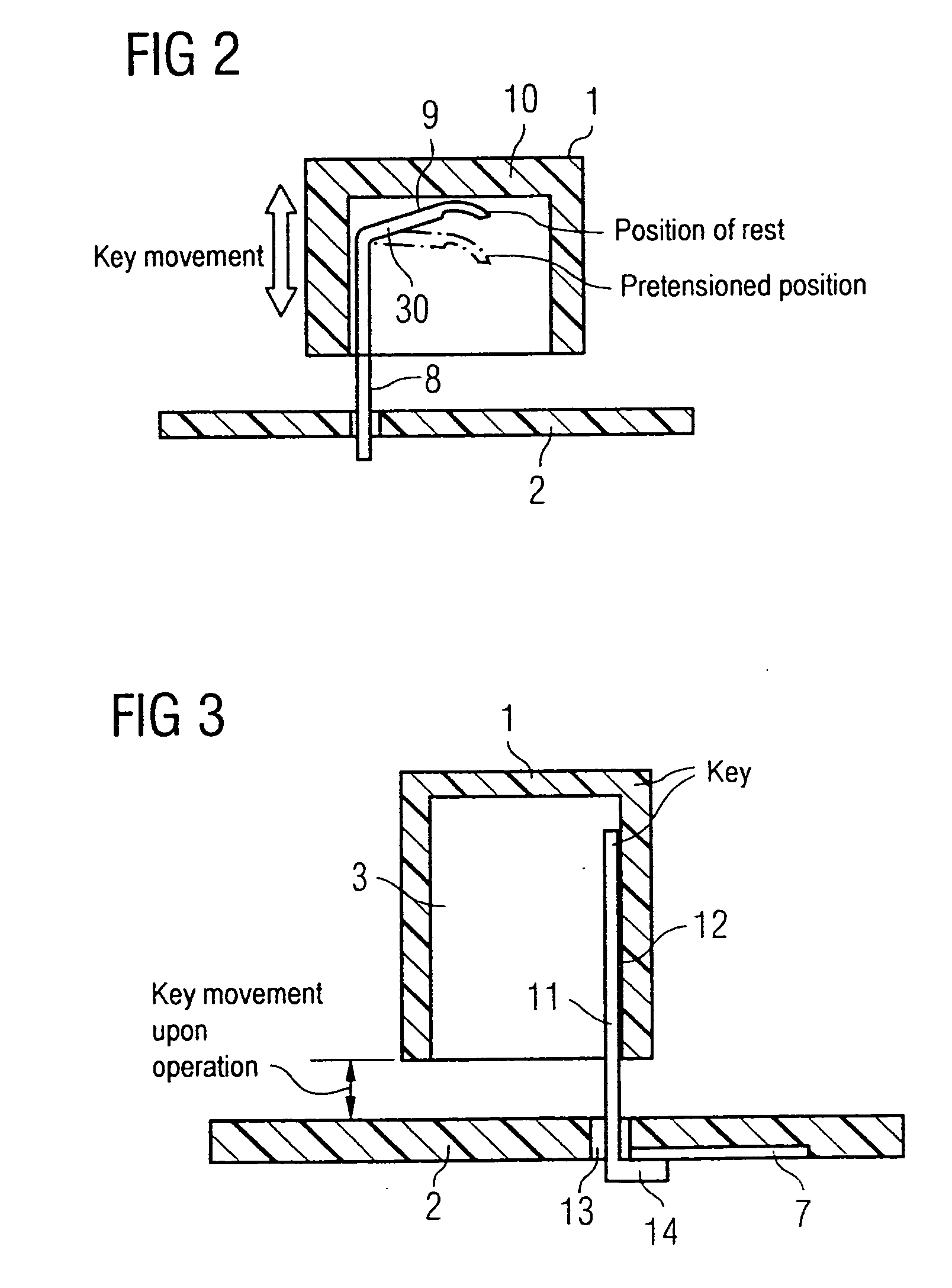Control element with proximity sensor
a technology of proximity sensor and control element, applied in the direction of electrical equipment, electronic switching, pulse technique, etc., can solve the problems of affecting the visual appearance, the element cannot be identified by the user, etc., and achieve the effect of small space required by the control element, additional assembly complexity, and small siz
- Summary
- Abstract
- Description
- Claims
- Application Information
AI Technical Summary
Benefits of technology
Problems solved by technology
Method used
Image
Examples
Embodiment Construction
[0020]FIG. 1 schematically shows a control element formed as a pushbutton switch with a linearly moving operating element 1 which is mounted in conventional fashion in a support element (not shown here) so as to move linearly. Pressure on the operating element 1 moves it toward the printed circuit board 2. The operating element 1 may be returned to the position of rest by a spring element (likewise not shown), for example. The operating element 1 has an interior space 3. Projecting into the interior space 3 of the operating element 1 is a first leg 4 of an angled and elastically deformable metal element 5. The first leg 4 is firmly connected to the operating element 1, which is made of a plastic material. A second leg 6 is arranged at an angle of slightly more than 90 degrees relative to the first leg 4 and is supported on a conductive face 7 of the printed circuit board 2. The second leg 6 is electrically connected to the printed circuit board 2 by means of snap-in hooks.
[0021] Wh...
PUM
 Login to View More
Login to View More Abstract
Description
Claims
Application Information
 Login to View More
Login to View More - R&D
- Intellectual Property
- Life Sciences
- Materials
- Tech Scout
- Unparalleled Data Quality
- Higher Quality Content
- 60% Fewer Hallucinations
Browse by: Latest US Patents, China's latest patents, Technical Efficacy Thesaurus, Application Domain, Technology Topic, Popular Technical Reports.
© 2025 PatSnap. All rights reserved.Legal|Privacy policy|Modern Slavery Act Transparency Statement|Sitemap|About US| Contact US: help@patsnap.com



